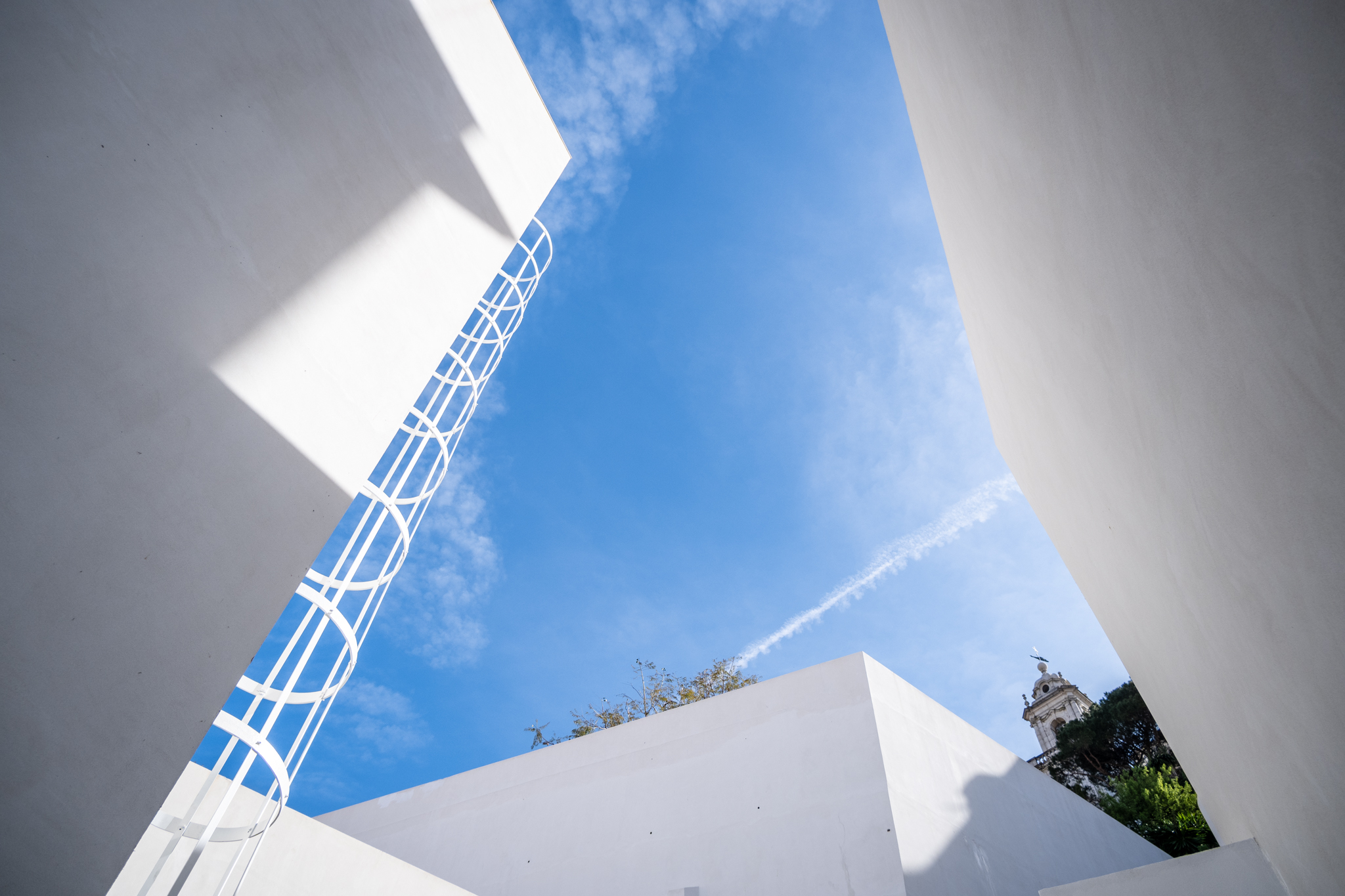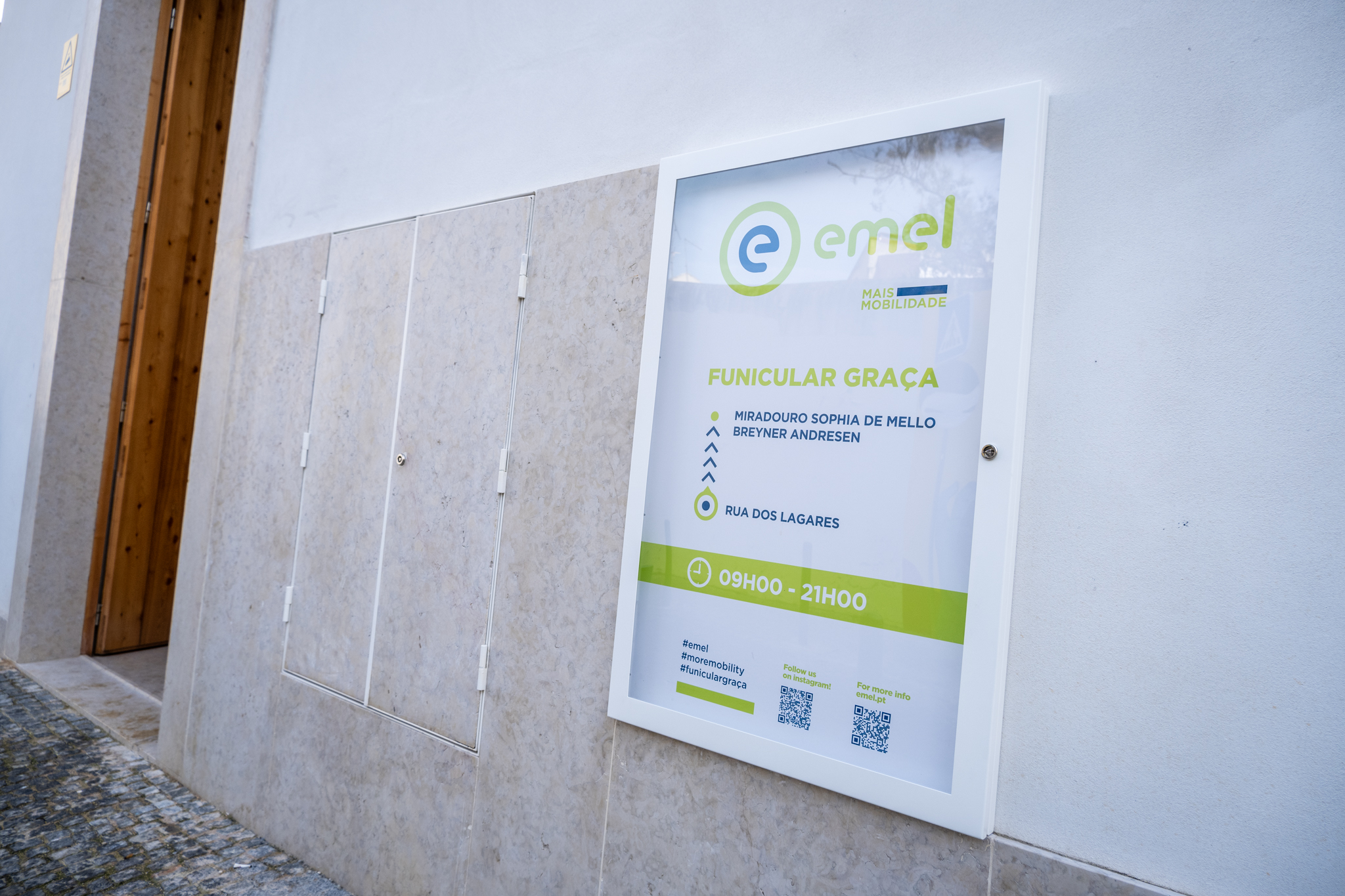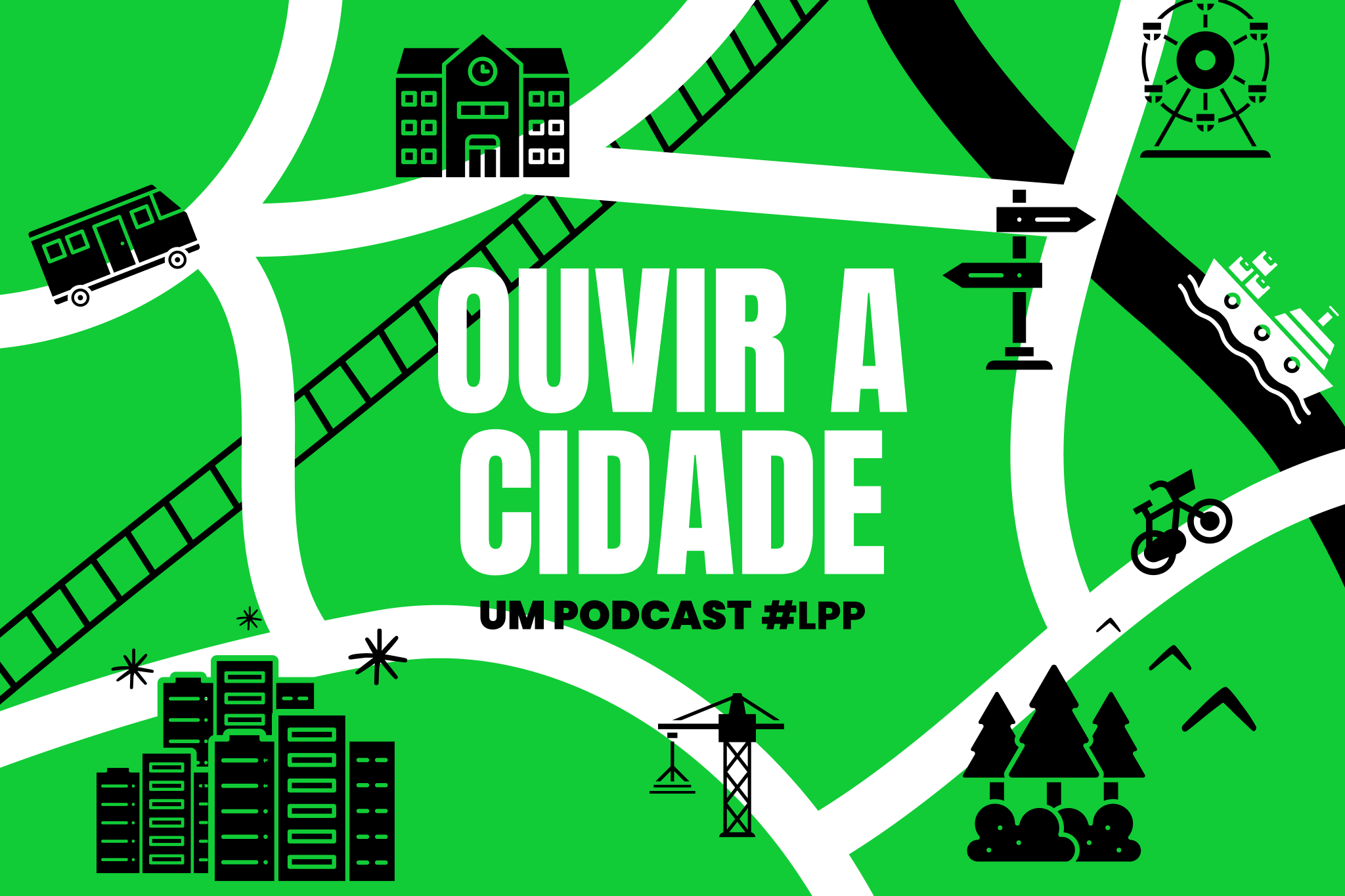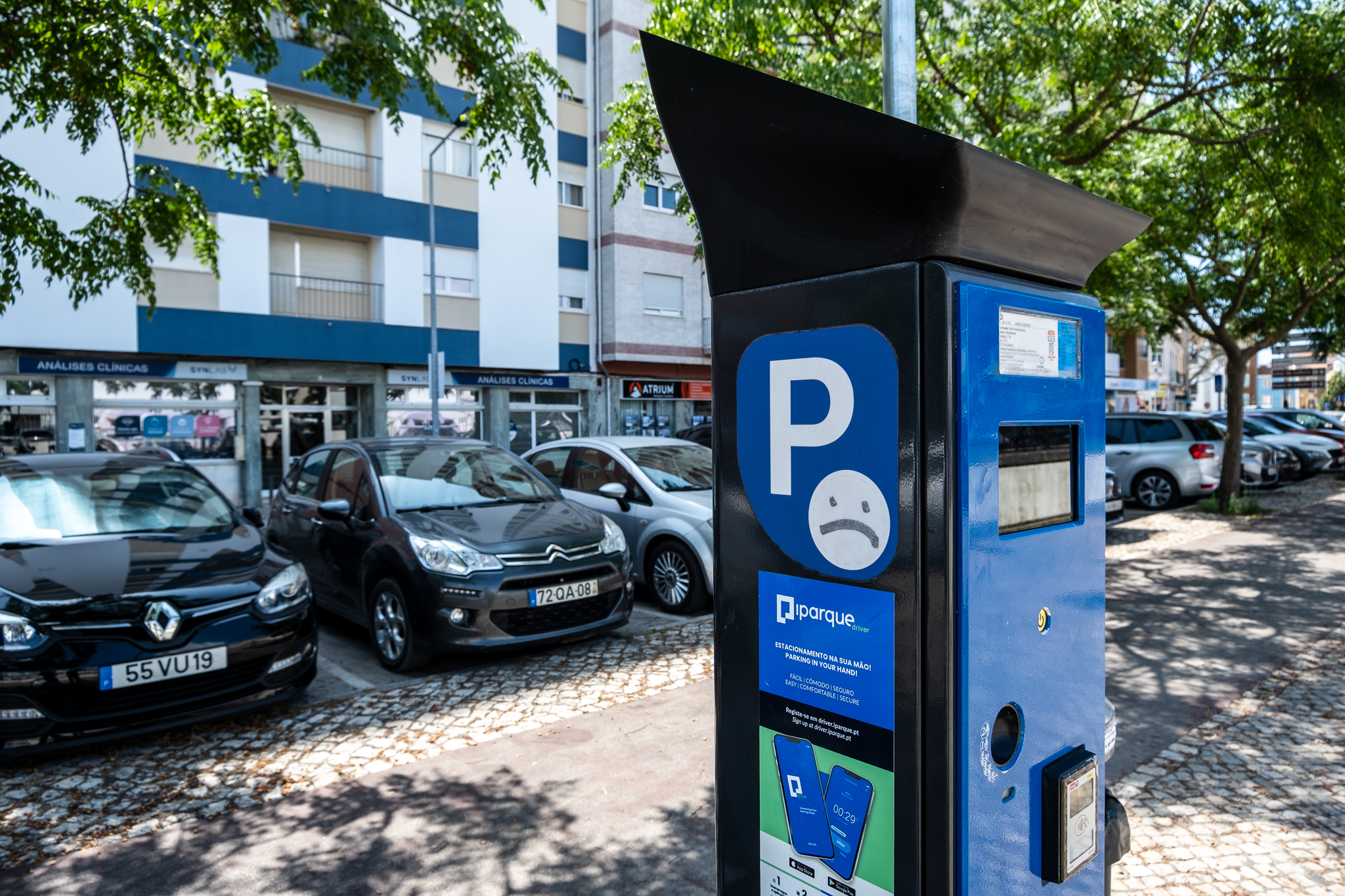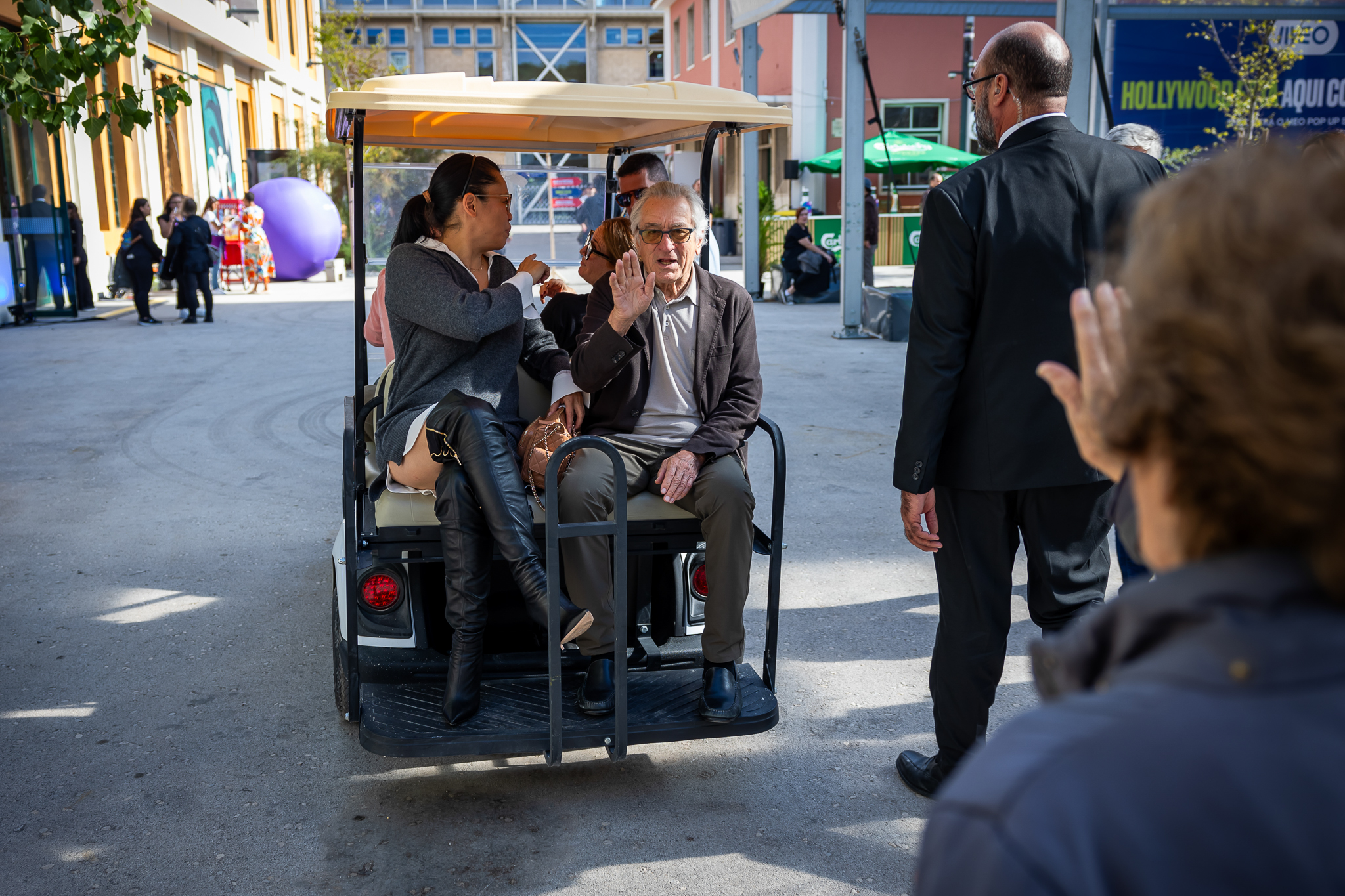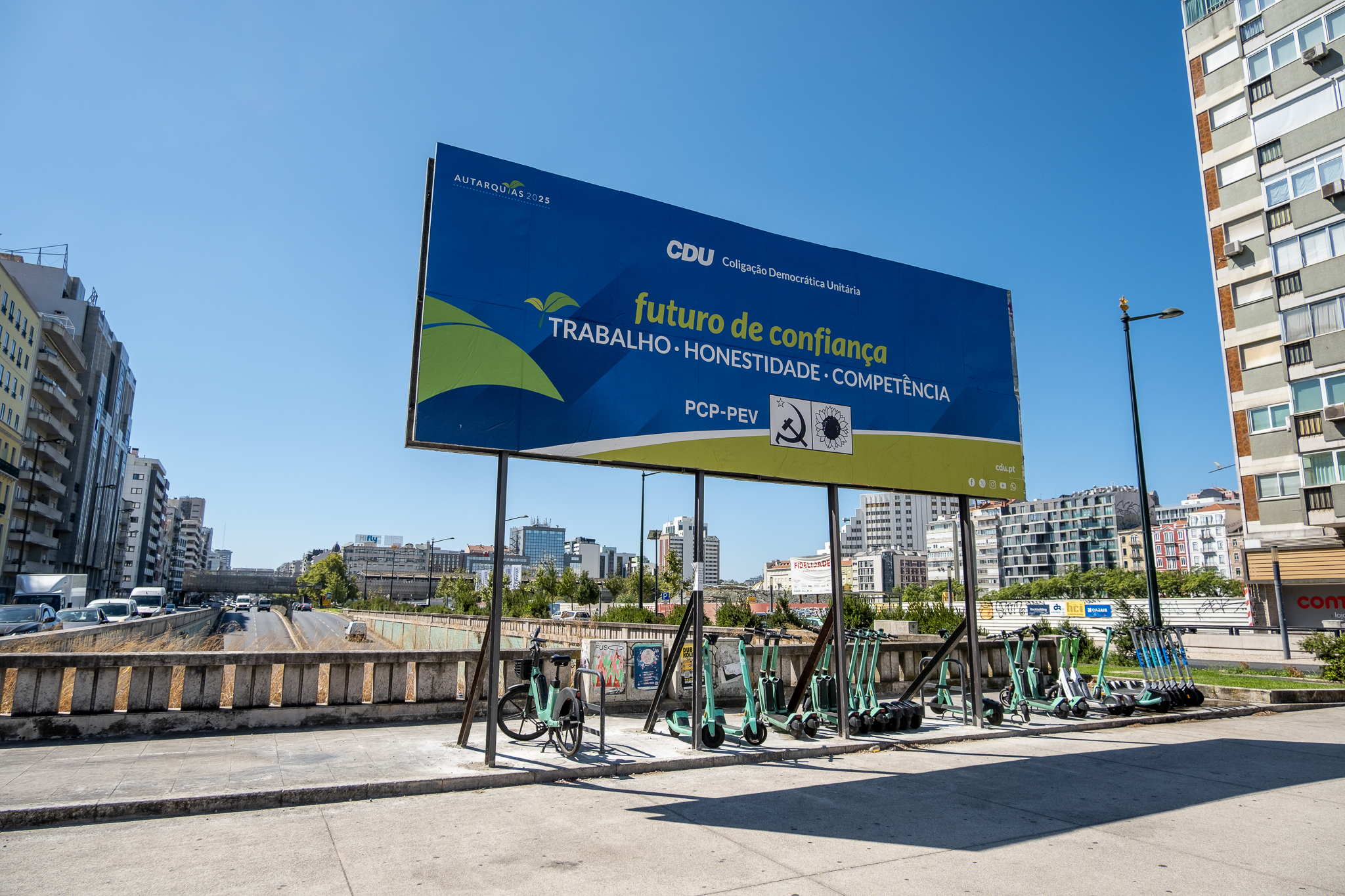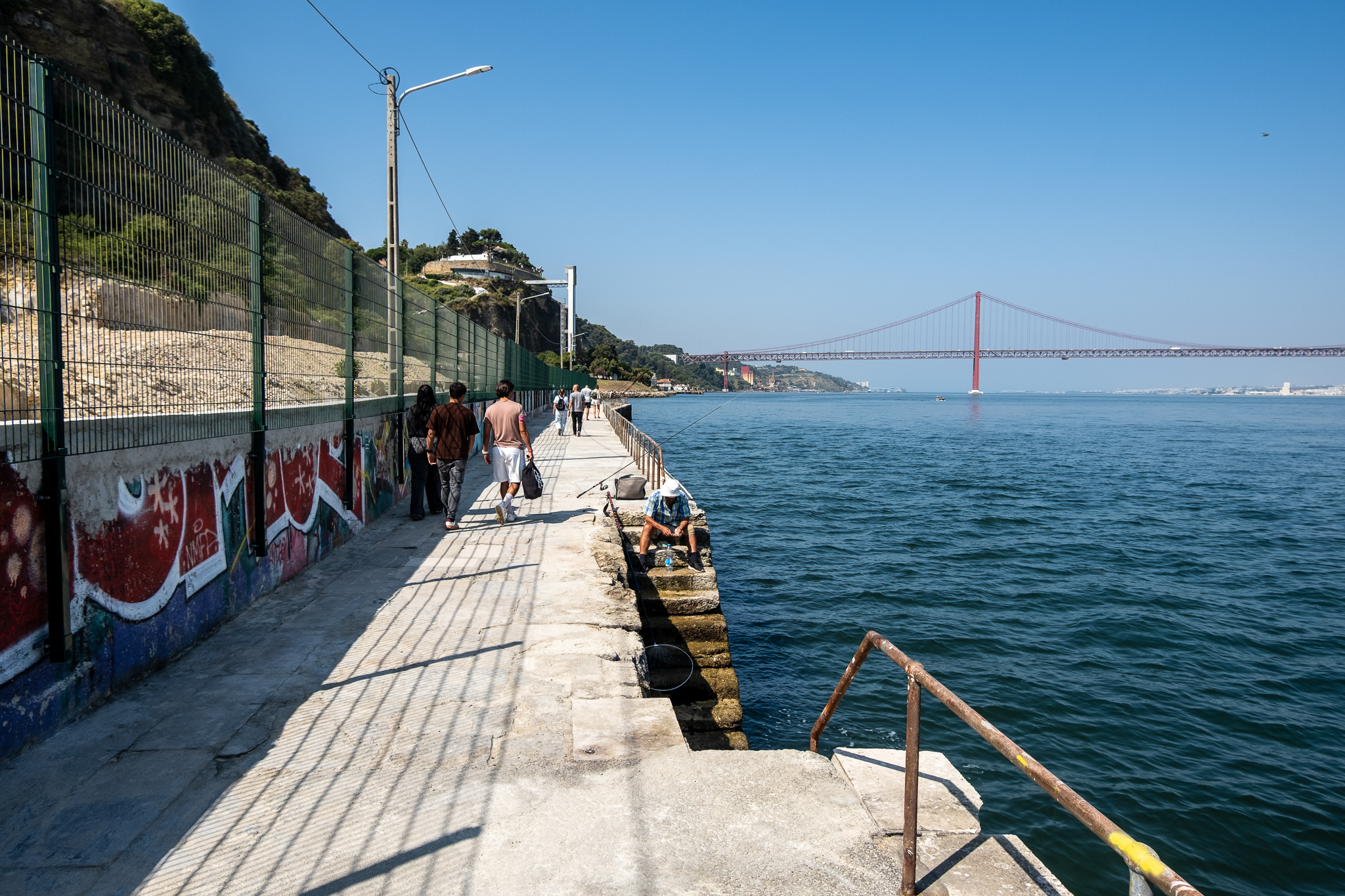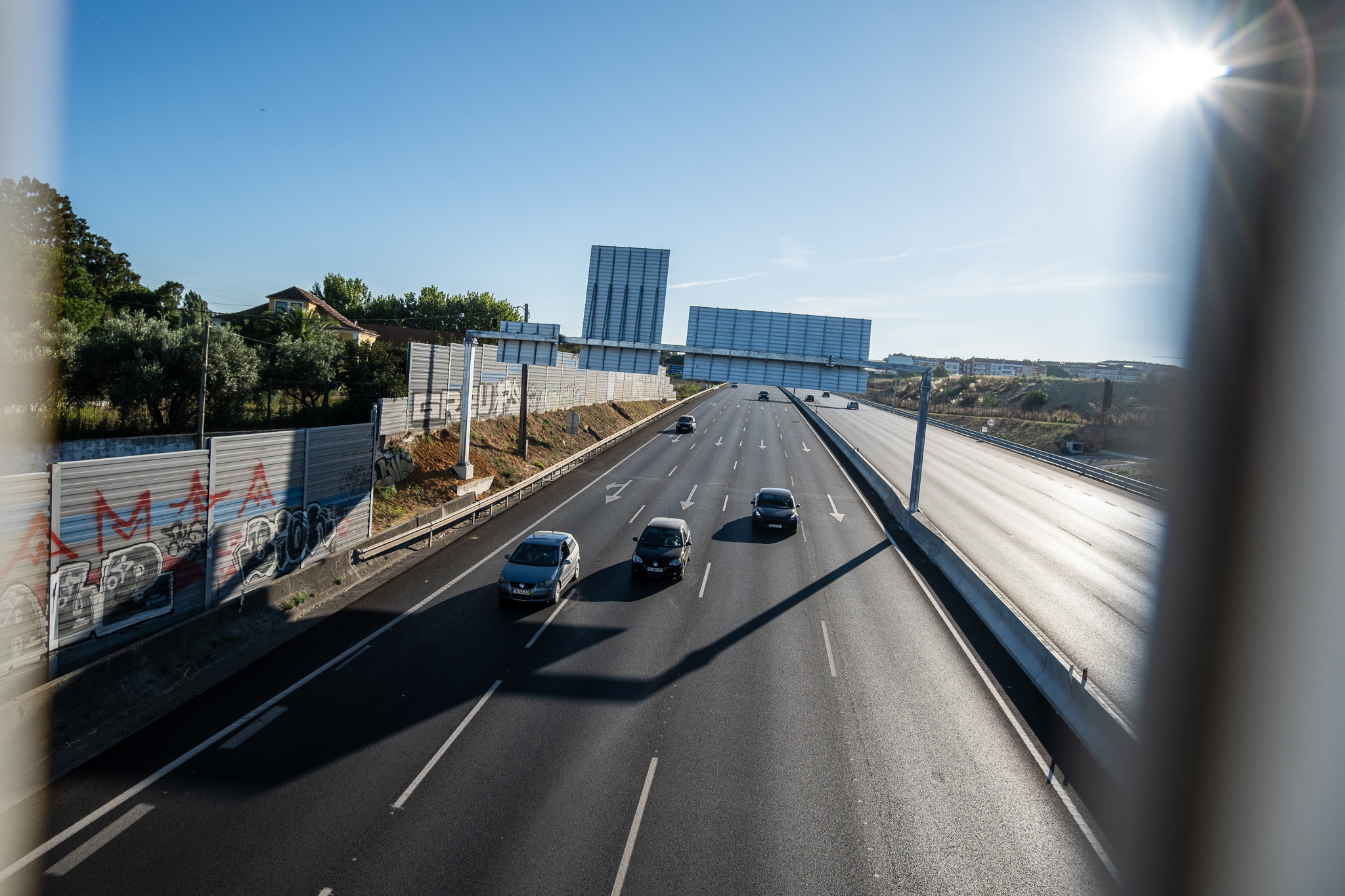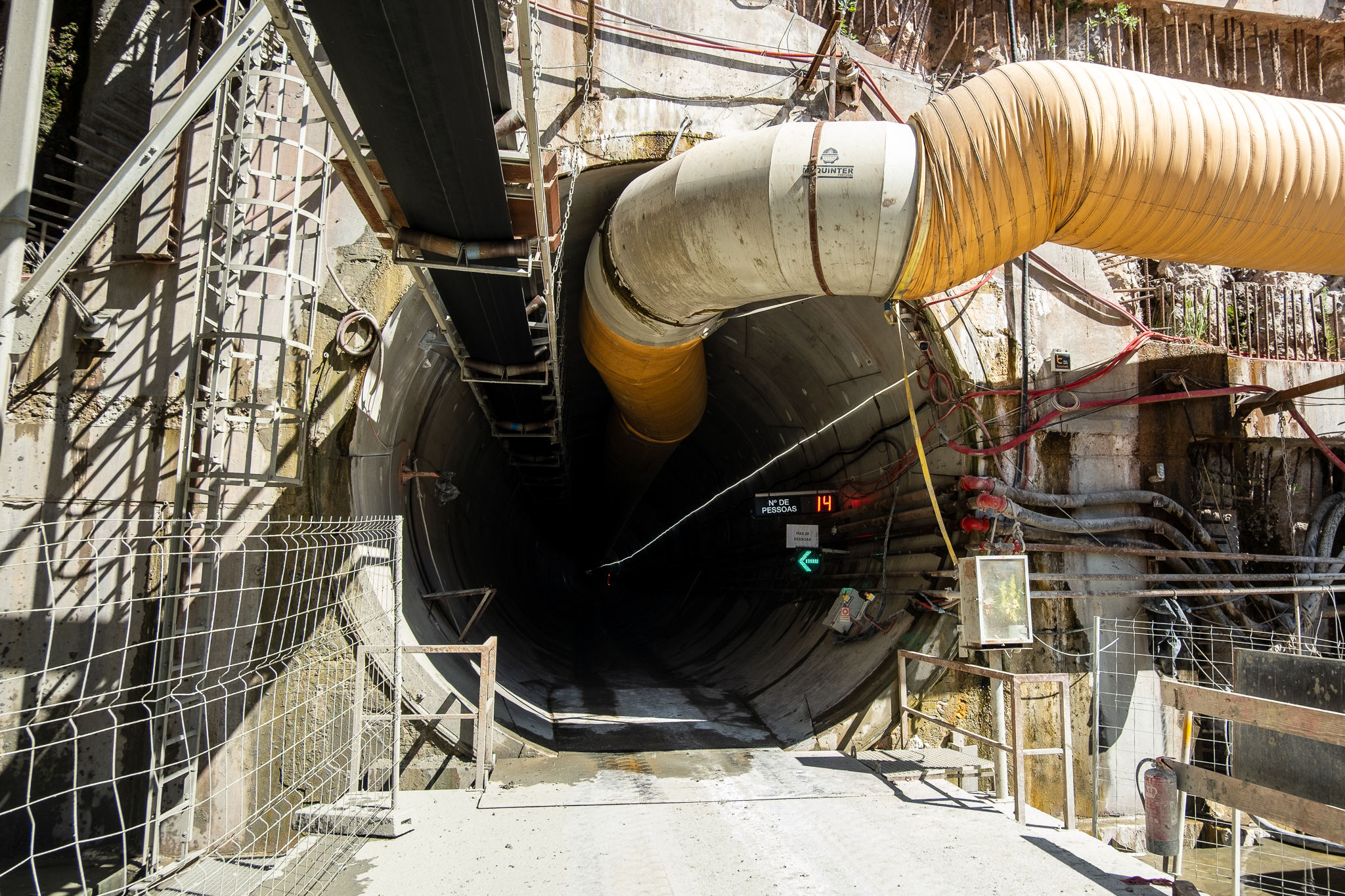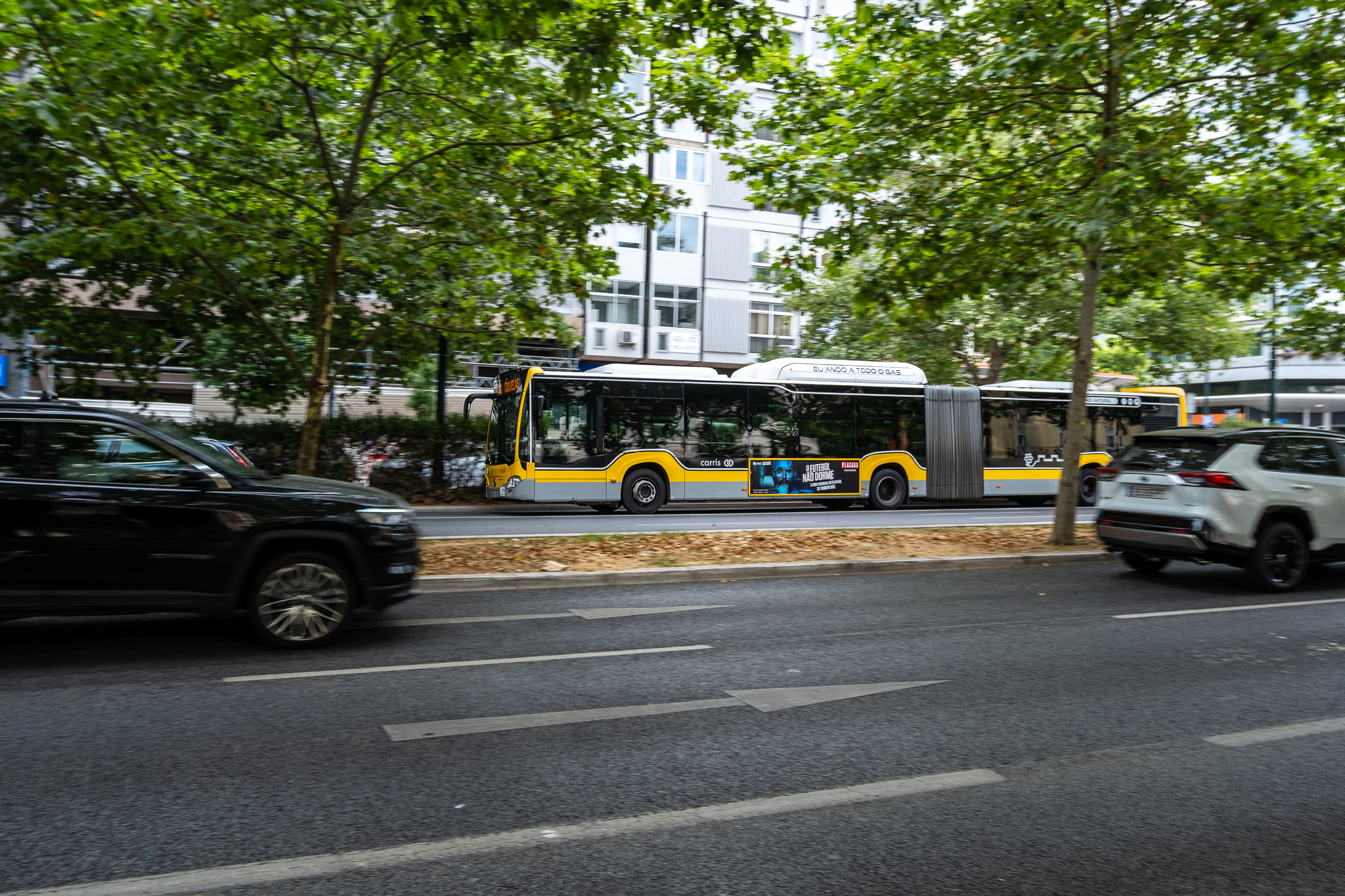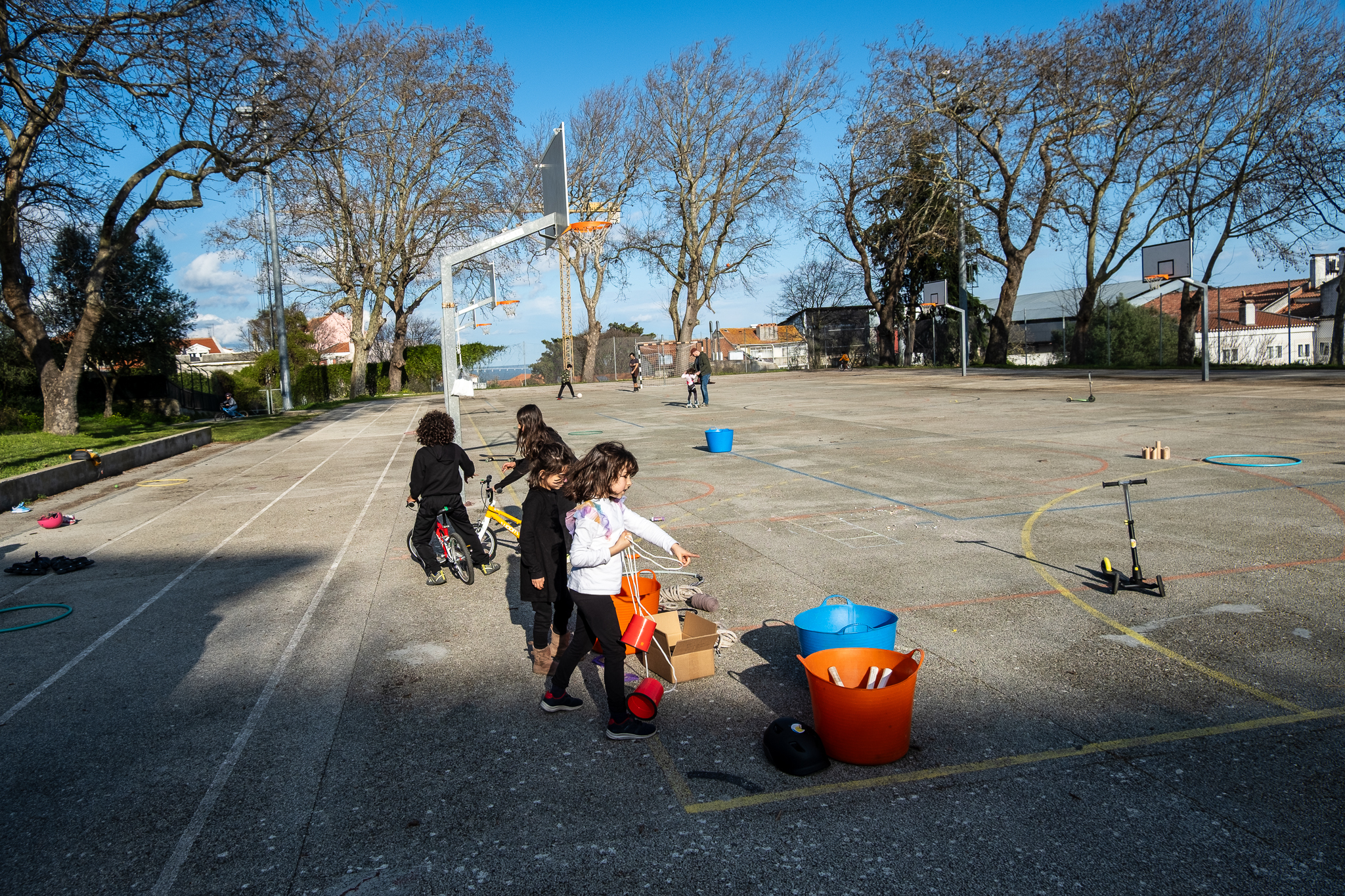15 anos depois, o Funicular da Graça é uma realidade fora do papel. Este equipamento, gratuito para quem tenha passe Navegante, vem facilitar as deslocações entre a zona do Martim Moniz e o Largo da Graça.

Chegar ao Largo da Graça ficou mais fácil. Agora, basta sair na estação de Metro do Martim Moniz, percorrer a curta Rua dos Cavaleiros e virar à esquerda para a estreita Travessa do Terreirinho. Chegamos, então, à Rua dos Lagares. Aqui, podemos apanhar o novo Funicular da Graça, que está incluído no passe Navegante e que vai ser gratuito para todos nos primeiros dois meses.
120 anos depois, a Graça volta a ter um elevador/funicular. Não é operado pelas Carris, como chegou a estar previsto, mas pela EMEL. “Queríamos abrir a obra o mais rápido possível e o mais rápido possível foi o que a EMEL se propôs a fazer”, explicou Carlos Moedas, Presidente da Câmara de Lisboa, na inauguração deste equipamento, esta terça-feira. “Quando chegámos em 2021, eu disse ao Filipe [Anacoreta Correia, Vice-Presidente] que tínhamos de avançar com isto, que concluir esta obra. Nós temos que pôr aqui tudo o que pudermos para que isto acabe. Está há tantos anos parado.”
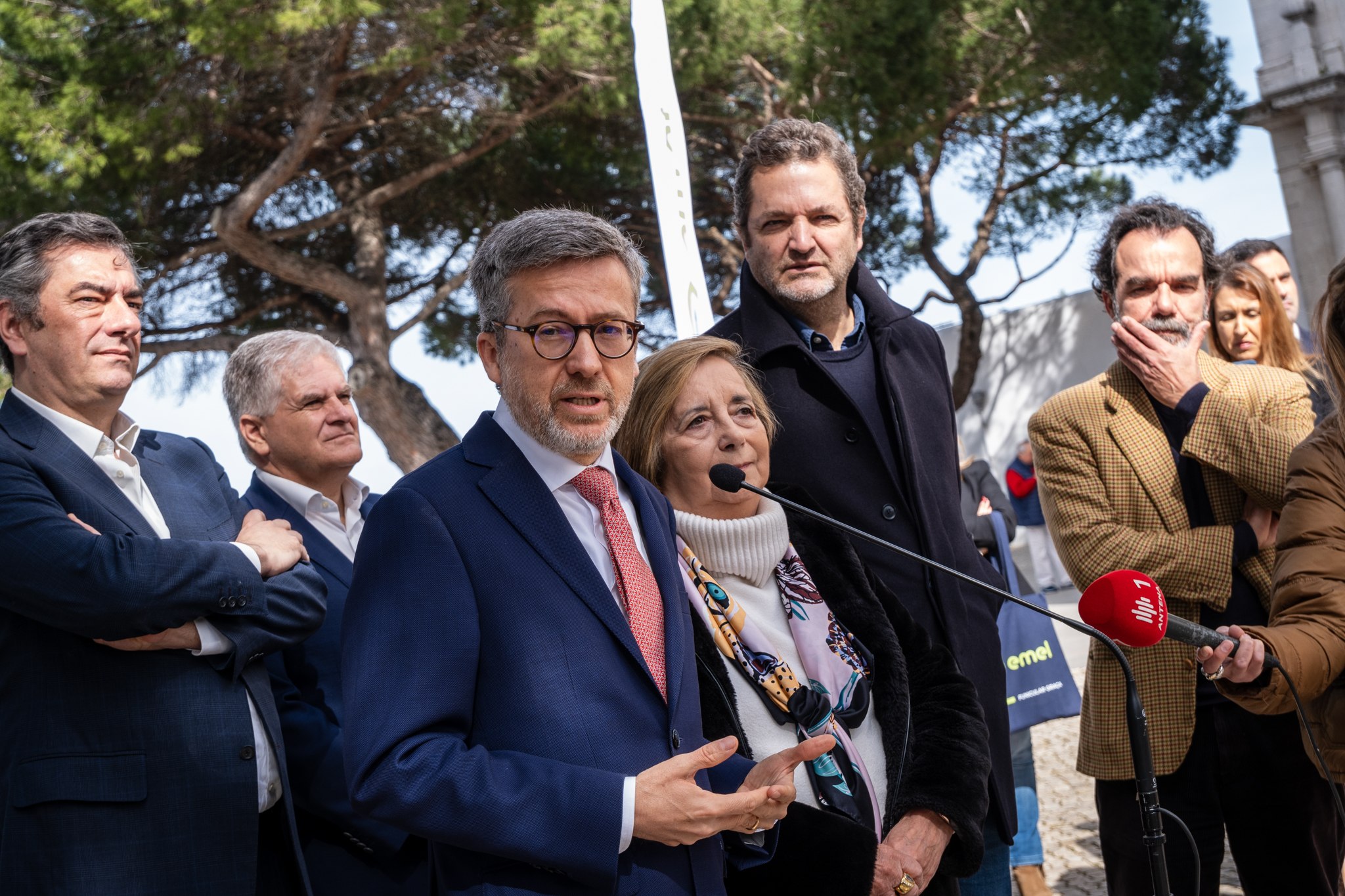
“Isto é uma obra que vem de 2009. Por isso, quero agradecer também todos aqueles que o antecederam e a todos aqueles que trabalharam neste projecto. A vida autárquica é assim: os ciclos muitas vezes são curtos. Temos de ter a capacidade de concluir as coisas, de não deixar as coisas para trás, de desatar os nós”, acrescentou Moedas, comentando uma ideia, um projecto e uma obra que acabou por atravessar os mandatos de António Costa e depois de Fernando Medina.
A construção do Funicular da Graça começou no Verão de 2021, com conclusão calendarizada para o final de 2022 e entrada em funcionamento prevista para o início de 2023. Contudo, a obra acabou por ficar pronta apenas no final do Verão passado, aguardando-se desde essa altura pela disponibilização do equipamento ao público. O Presidente da EMEL, Carlos Silva, justifica aos jornalistas este atraso com “a pandemia e a guerra na Ucrânia”, que “impactaram o fornecimento de materiais para a construção”.
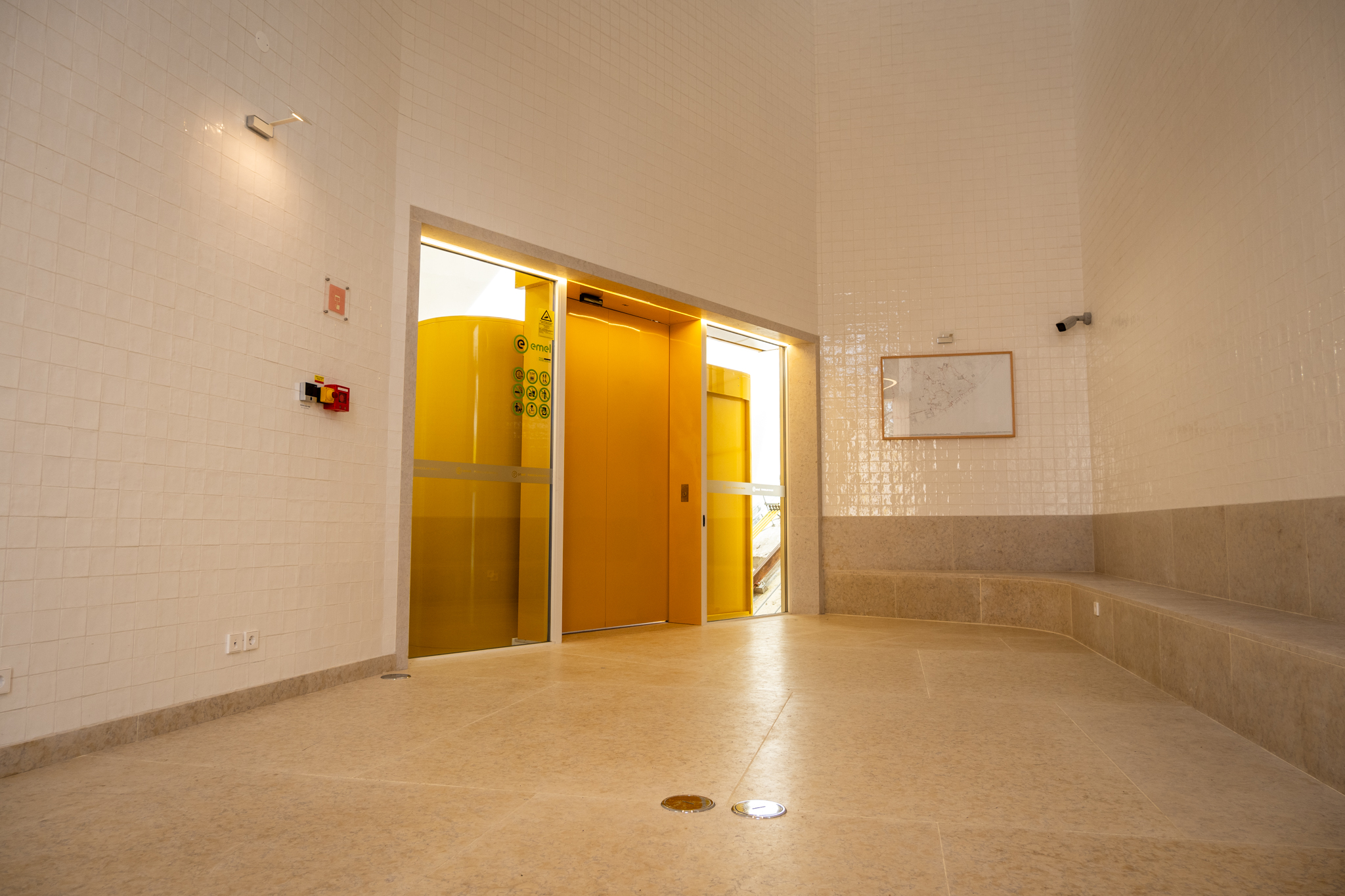
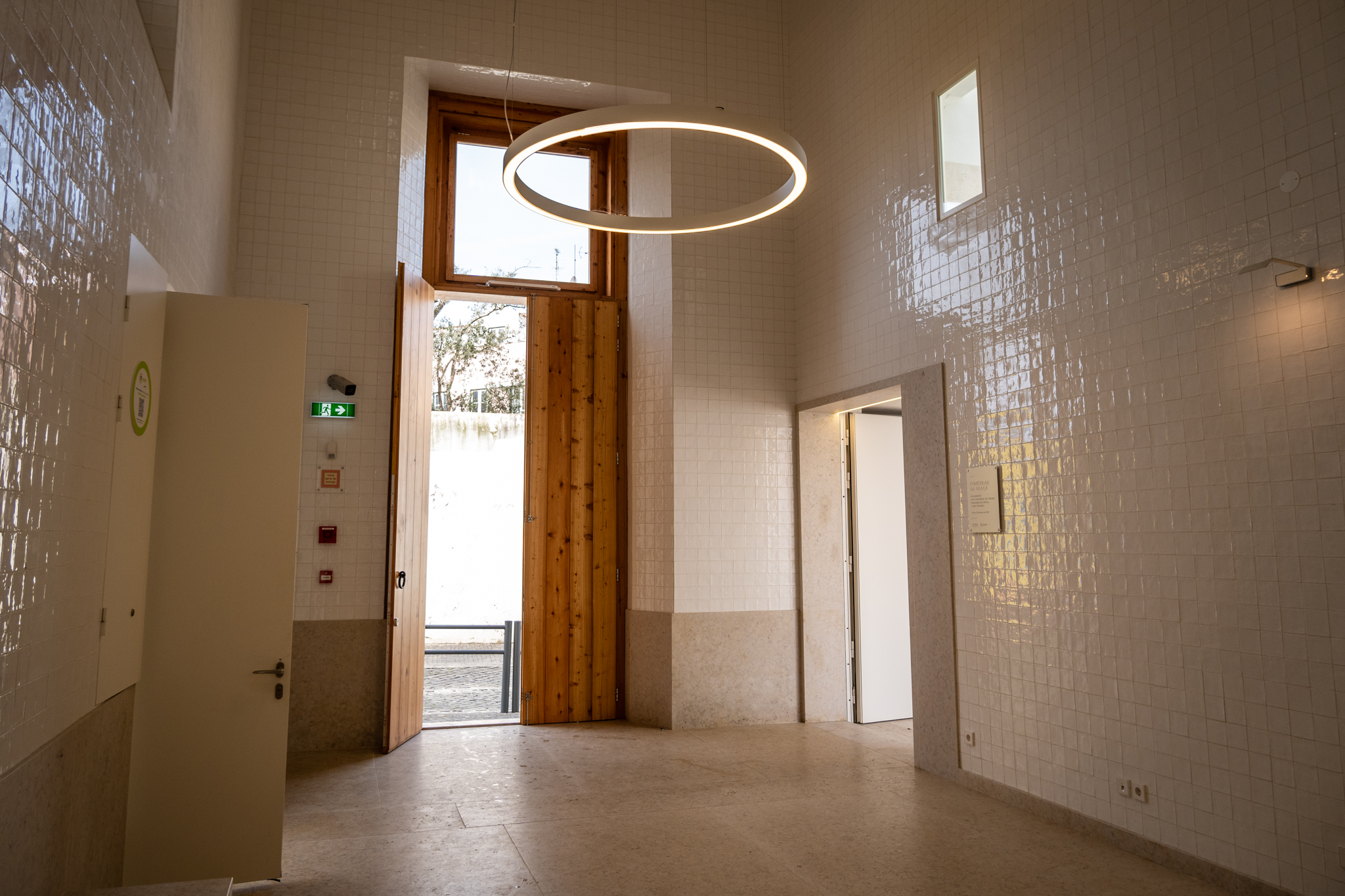
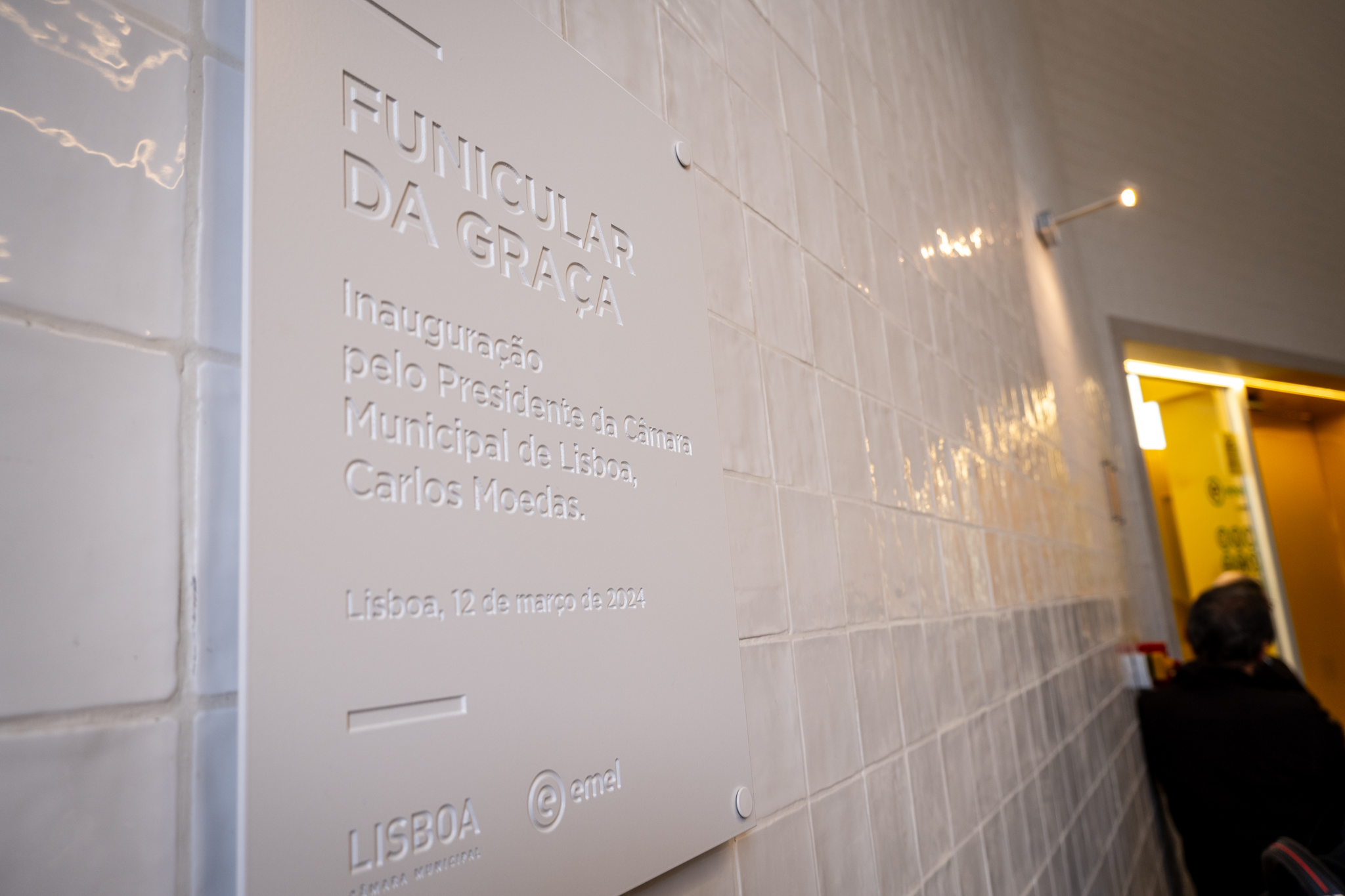
Em abono da verdade, todavia, este foi o segundo atraso na construção do Funicular. A obra iniciou-se pela primeira vez em 2016, depois de ter sido apresentada em 2009 no âmbito do designado Plano de Acessibilidade Suave e Assistida à Colina do Castelo. “Primeiro, houve um atraso estrutural complexo devido às escavações arqueológicas, porque encontrámos um alambor da muralha fernandina, que que está por aqui por baixo, e, portanto, houve necessidade de fazer o acompanhamento dessa situação.” Isso implicou alterar o projecto e relançar a empreitada. Processos que demoram.
Uma viagem no Funicular da Graça demora menos de 5 minutos. O equipamento sobe e desce silenciosamente, contrastando com os elevadores e ascensores da Carris que têm mais de um século de história. A “cápsula” ou cabine tem uma janela panorâmica, permitindo aos passageiros desfrutarem da cidade durante a subida ou descida. Por falar em passageiros, podem viajar 14 pessoas de cada vez. Se não circular cheio, é possível o transporte de bicicletas convencionais, sendo que o transporte de uma bicicleta dobrável ou uma trotineta é sempre mais fácil. As viagens são acompanhadas por um funcionário da EMEL, responsável pelo manuseio do equipamento e por prestar apoio.
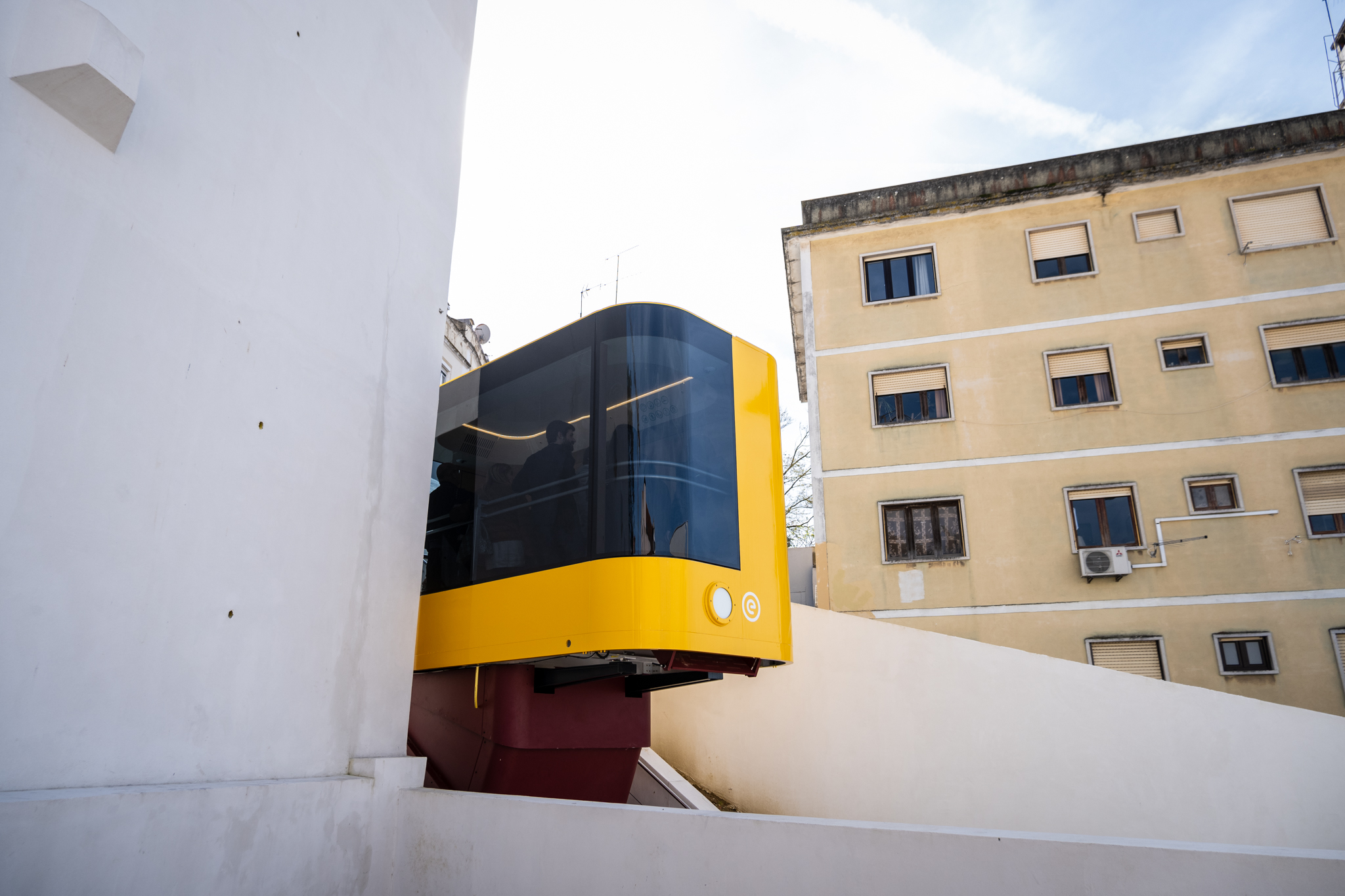
O Funicular da Graça está disponível entre as 9 e as 21 horas, durante todos os dias da semana. Até ao início de Maio, será gratuito para todas as pessoas; nesse mês entrará em vigor um tarifário que ainda vai ser definido, “tendo em consideração o benchmarking do já é praticado na cidade em equipamentos similares” (neste momento, nos elevadores e ascensores da Carris, uma viagem custa 4,10 euros, permitindo subir e descer). “Também existe um funicular parecido com este no Porto, que também serve muito o turismo. Também criámos este período promocional para nos dar mais um bocadinho de tempo para projectar estas intervenções”, diz Carlos Silva.
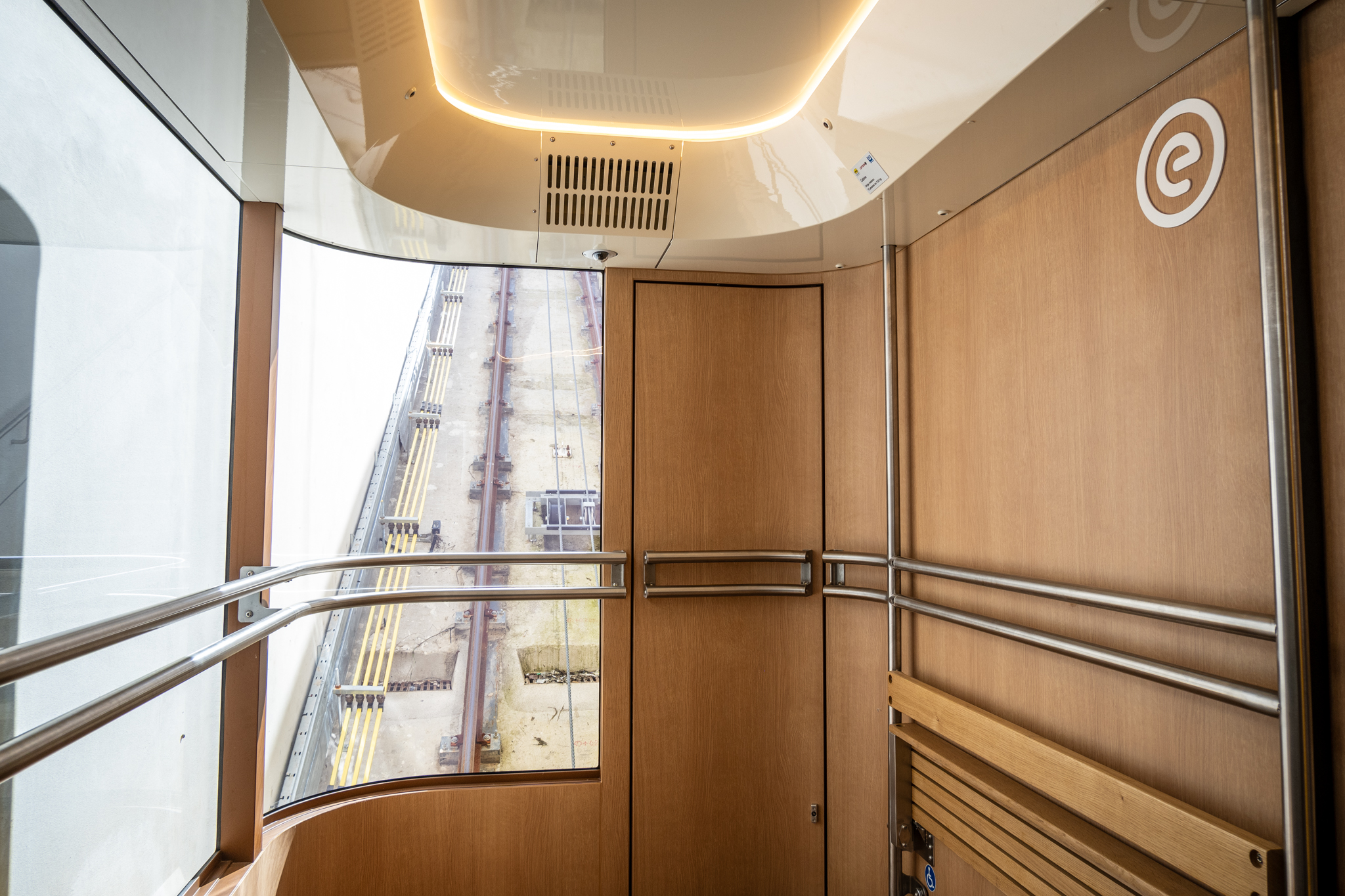
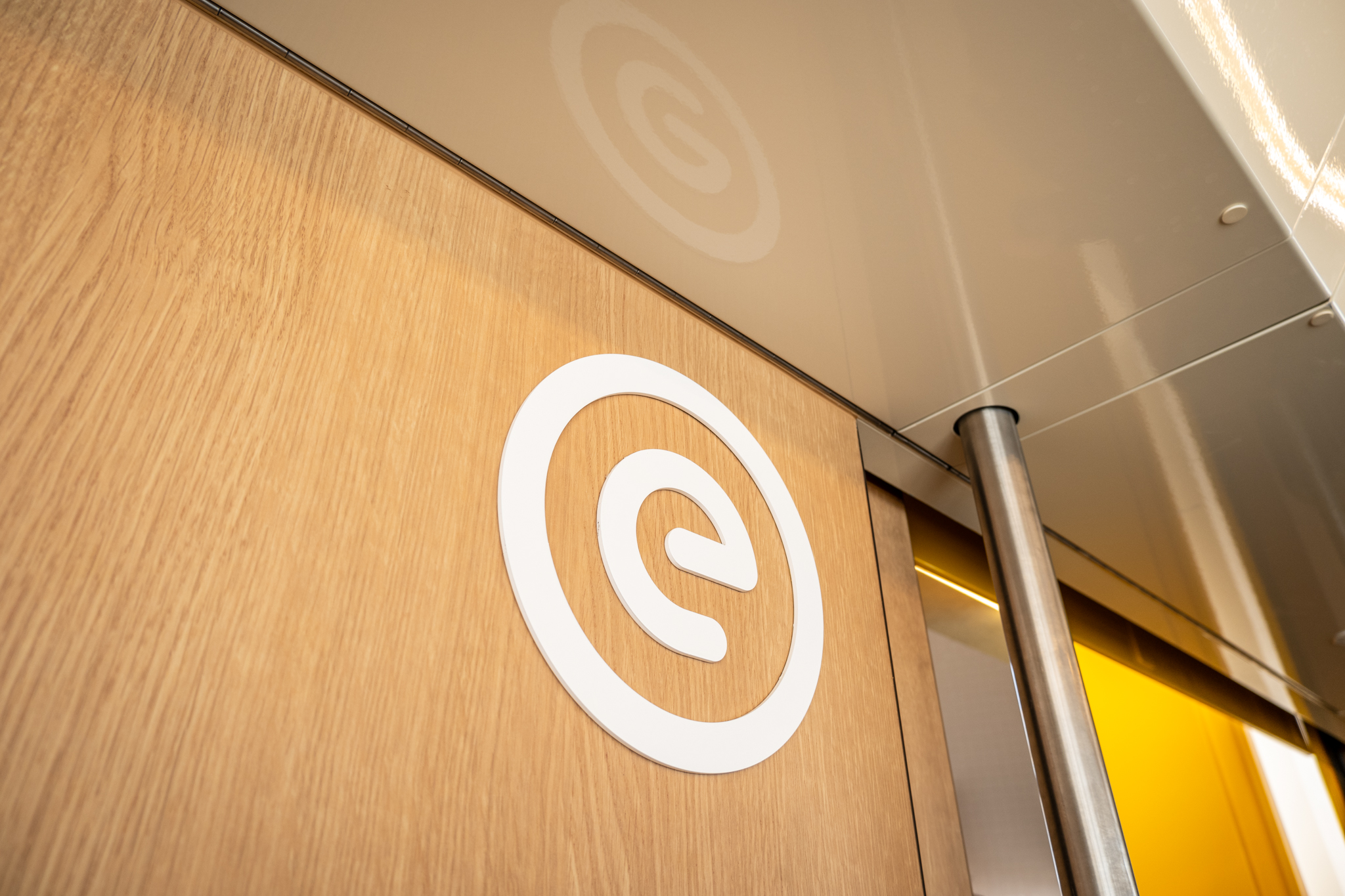
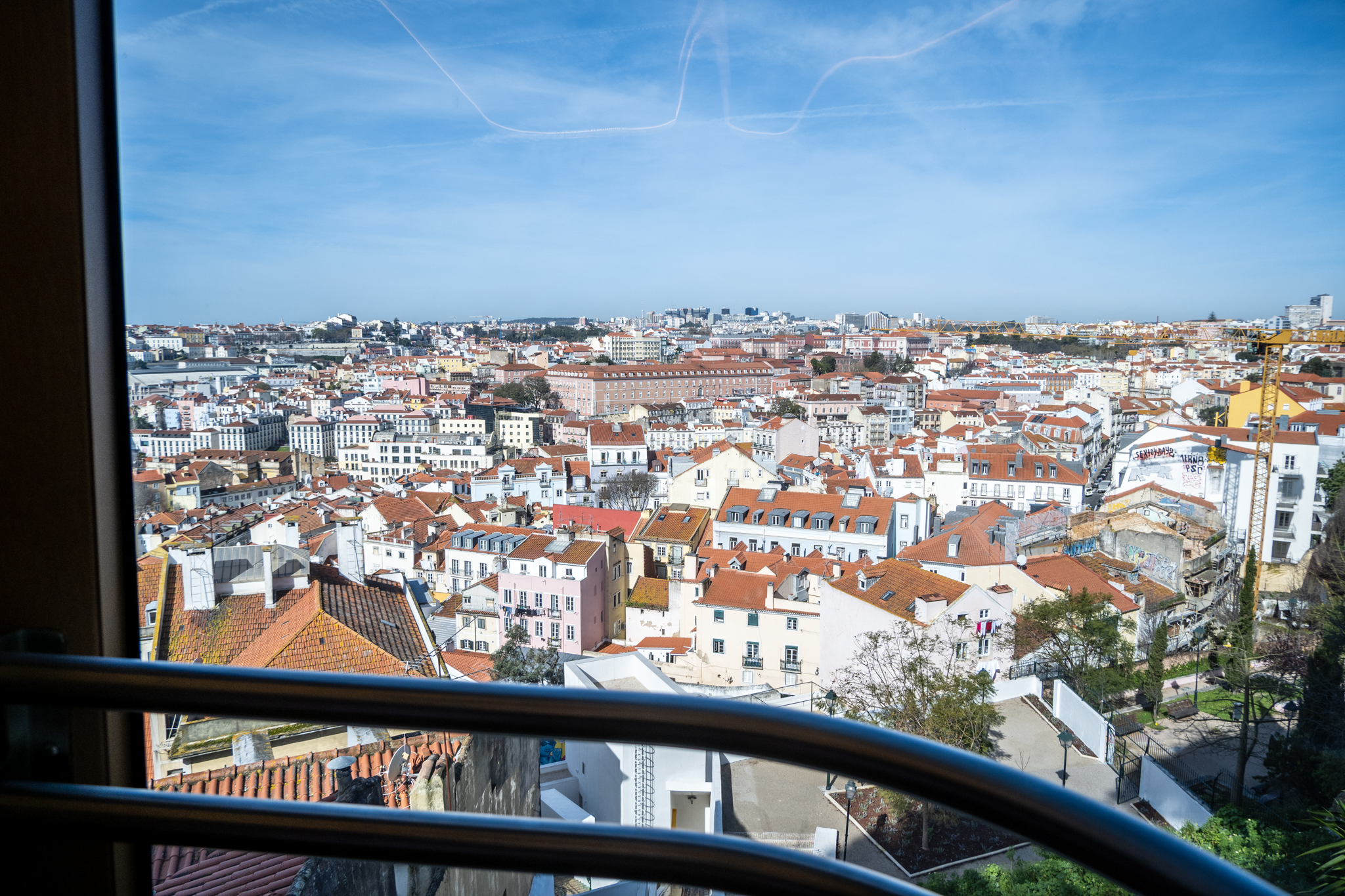
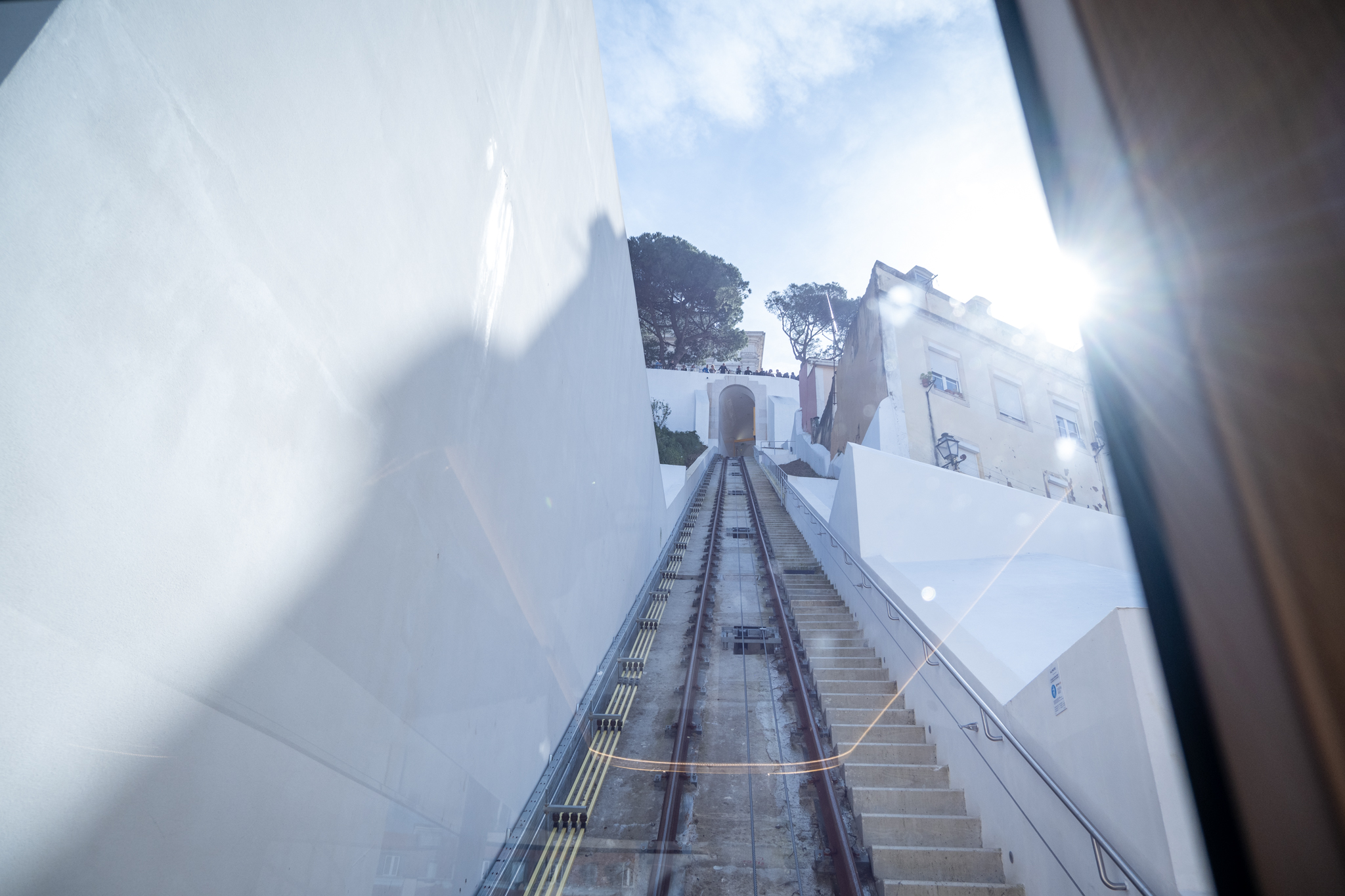

Já para Carlos Moedas, “é normal que os turistas paguem, porque eles têm de ajudar a cidade”. “Sabem que a minha visão sobre o turismo é esta: é que se consigam conjugar os interesses. Aqueles que vêm de fora têm mais poder de compra, podem pagar e vão pagar. Assim deve ser”, acrescentou, simplificando que, tal como já acontece nos elevadores e ascensores da Carris, “para os lisboetas e todos aqueles que têm passe Navegante, será gratuito. Portanto, podem utilizar quando quiserem”.
O Funicular da Graça tem o amarelo da Carris, apesar de esta ter saído do projecto. Não quer dizer que o equipamento não possa vir, no futuro, ser transferido para o portefólio desta empresa, como chegou a admitir o Vice-Presidente numa entrevista ao Público. Por agora, é da EMEL. E representa uma nova área de negócio para a empresa municipal de mobilidade. Se a EMEL já gere todos os outros equipamentos do Plano de Acessibilidade Suave e Assistida à Colina do Castelo – nomeadamente o três elevadores (o da Sé, o da Rua dos Fanqueiros e o do Chão do Loureiro) e as escadas rolantes da Saúde/Martim Moniz –, o Funicular da Graça é o primeiro que é pago.
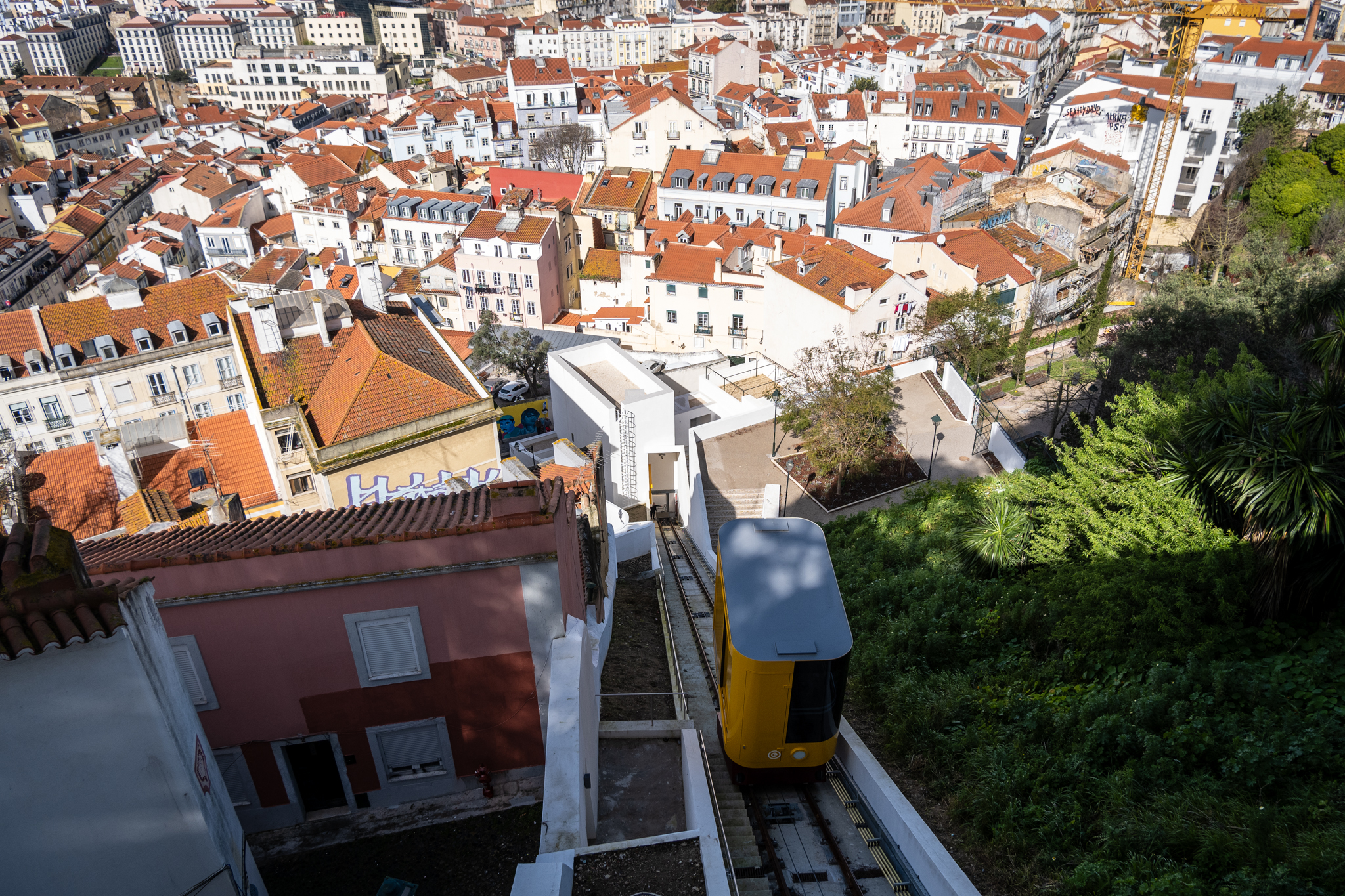
“Esta operação representa um desafio para nós, porque, entre as várias áreas de negócio que a EMEL tem, esta é uma nova área”, admitiu Carlos Silva à comunicação social. “A obra esteve a cargo da EMEL e a gestão posterior do equipamento foi uma decisão tomada recentemente pela Câmara, tendo em conta a necessidade de acelerar todo o processo. Não fazia muito sentido termos uma obra desta envergadura pronta mas encerrada ao público. A EMEL conseguiu agilizar mais facilmente que a Câmara ou que a Carris.“ Para o Presidente da EMEL, “temos aqui um bom exemplo de uma obra que serve a mobilidade e os cidadãos de Lisboa, mas também o turismo”.
O Funicular da Graça permite chegar ao Largo da Graça, mais concretamente ao Miradouro Sophia de Mello Breyner Andresen, em frente à Igreja da Graça. Circular em via única e dedicada, constituída por carris e com dois pontos de paragem, no início e no fim do trajecto. O Funicular é acessível a todas as pessoas, incluindo quem se desloca em cadeira de rodas, contando com um elevador convencional no lado da Graça para vencer a escadaria de acesso/saída.


